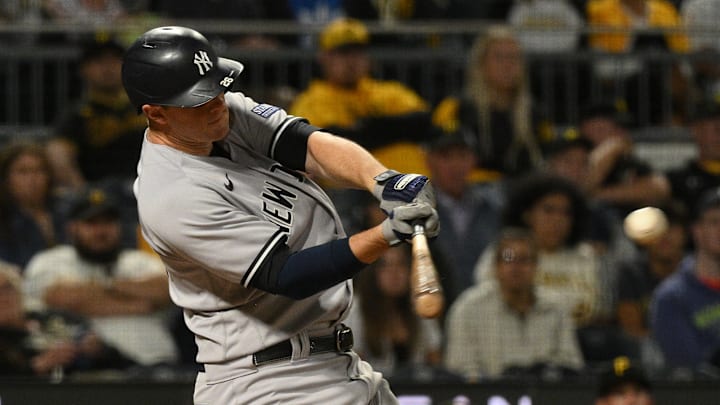The grind of a full 162-game season takes a toll on every player. You can go on some serious hot and cold streaks during the season. If you can stay hot long enough, you just might win the batting crown. D.J. LeMahieu has done this twice. He also almost did one thing that we have seen only three times since the expansion to the 162-game format: hit 100 points LOWER the very next year.
LeMahieu came to the Yankees via free agency and immediately paid dividends with his hitting. A .327 batting average with 26 HR and 102 RBI showed that the Yankees made a great signing. He followed that up with leading the majors in 2020 with a .364 batting average. With 2021 looking to be a full season, unlike the shortened 2020 season, the Yankees still had high hopes of another great season from their infielder. Well, things don’t always work out in that 162-game grind I was mentioning.
LeMahieu’s production dropped in every category, including his batting average to the tune of .268 …just four points shy of a full 100-point drop. This kind of drop hasn’t been accomplished by many. In fact, since 1961, only three players have done it.
3 players with largest batting average drop one year after leading the league
Chipper Jones, 2009: Jones already had his ticket punched to Cooperstown when he entered the 2008 season. He solidified it by leading the majors in hitting with a cool .364 average. At age 36, this was his first and only title. Entering his age 37 season, I think the expectations were still pretty high regardless of his age for Chipper, since he always was around the .300 mark. Father Time can be cruel and, for Chipper, he was. He went on to hit exactly 100 points lower to finish 2009 at .264. His average went up all the way to his last season, but he’s on the list. This dip is something I’m sure he’s forgotten -- and rightfully so, because he’s one of the greats.
Julio Franco, 1992: Speaking of Father Time, here he is in the flesh! Franco played until his age 48 season in 2007 after starting with the Phillies back in 1982! Always a fine hitter who could go to right field with that inside out swing, he led the majors in 1991 with a .341 average. 1992 was a different story. A knee injury limited him to only 35 games and he hit .234. The injury was so severe it basically ended his career as a middle infielder. I think due to the injury and him rebounding back to over .300 two years later, we can give him a pass. Father Time beat the odds and had a great career. I was definitely a fan.
Norm Cash, 1962: We have to go back 30 years since Franco to find our next player. Cash in 1961 took full advantage of the extended games and expansion teams to slug 41 HR, 132 RBI and a great .361 average. He only finished fourth in MVP voting due to better years, especially from a couple of guys named Mantle and Maris. In 1962, many players saw a drop in production, and Cash wasn’t the only one caught up in it. Sure, the power numbers were still there … he hit 39 bombs. But the batting average? Yikes. It fell to .243, a whopping 118-point drop. Unlike the other players mentioned, there really wasn’t an injury or a circumstance to point to for the drop off. Cash was a .271 lifetime hitter, so that .361 was a one-year aberration and most likely was a direct result of the expansion year.
Being a great hitter consistently year to year has been accomplished by many great players. But it’s not as easy as it seems. The players listed above show that you can have that great year and win a batting title, but if you fall, you can fall hard and fast.
